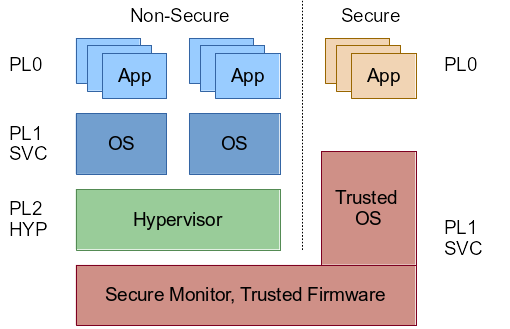This is part two of my blog post about Kernel-Virtual Machine (KVM) on a 32-Bit ARM architecture. The post is meant as a starting point for those who want to play with KVM and provide a useful collection of Qemu commands for virtualization.
Virtualization host setup
The Kernel configuration I used for my platforms Host kernel can be found here. Since I run my experiments on a Toradex Colibri iMX7D module, I started with the v4.1 configuration of the BSP kernel and updated that to v4.8 plus enabled KVM as well as KSM (Kernel same-page merging).
As root file system I use a slightly modified version of the Ångström distributions “development-image”, version 2015.12 (built from scratch with OpenEmbedded). Any recent ARM root file system should do it. I let Qemu v2.6.0 preinstall (by just adding “qemu” to the image and specifying ANGSTROM_QEMU_VERSION = “2.6.0” in conf/distro/angstrom-v2015.12.conf).
Virtualization guest setup
For the virtualization guest setup I was looking for something minimalistic. I uploaded the compiled binary of the Kernel (as tared zImage) and initramfs (as cpio.gz).
I built a custom kernel directly using v4.7 sources and a modified/stripped down version of the vexpress_defconfig (virt_guest_defconfig). I found it useful to look into Qemu’s “virt” machine setup code (hw/arm/virt.c) to understand what peripherals are actually emulated (and hence what drivers are actually required). Continue reading “Using KVM with Qemu on ARM”

